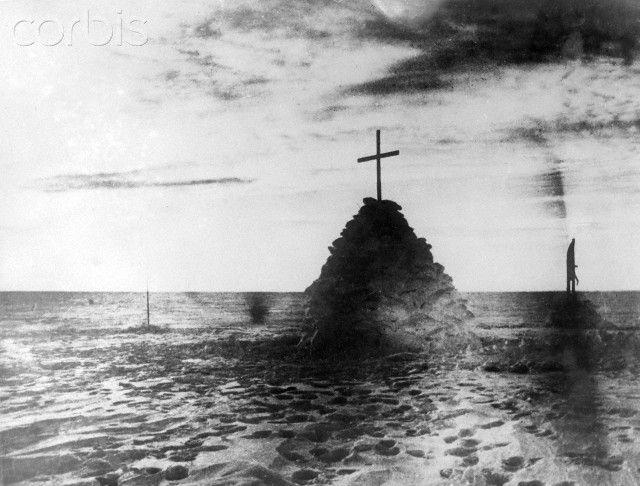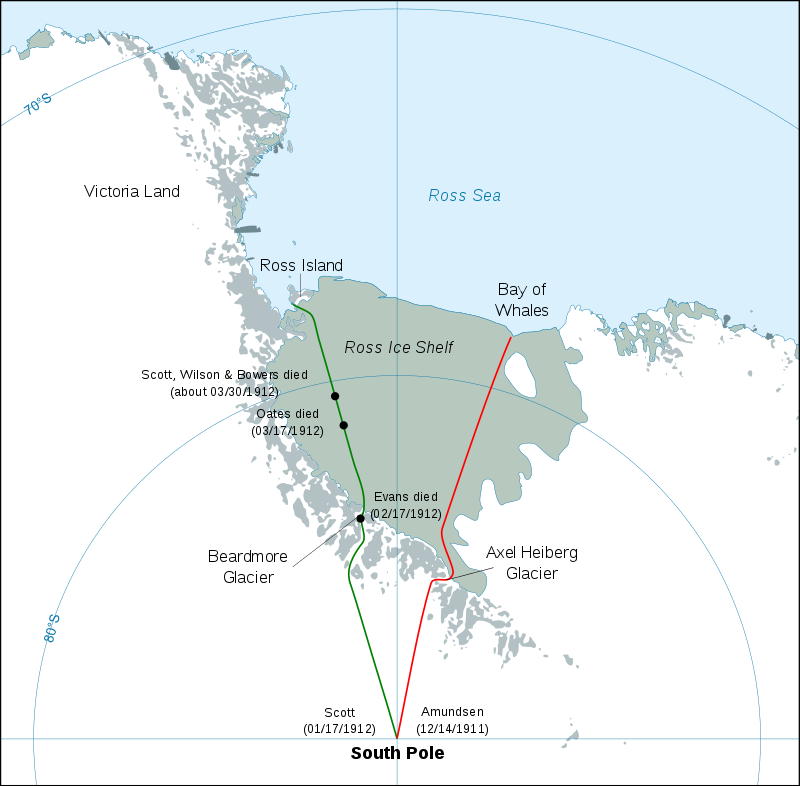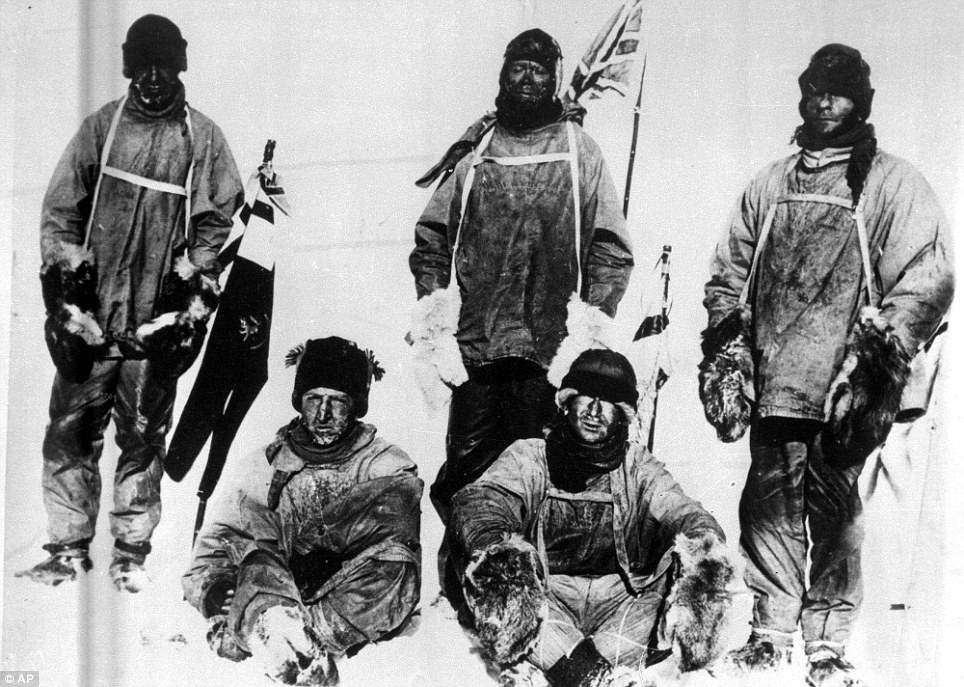Roald Amundsen always wanted to go to sea. The fourth son of a family of Norwegian shipowners and captains, Amundsen’s mother wanted no such thing for her boy, and made him vow that he’d go to school to become a doctor. Amundsen was 21 when his mother died. He kept his promise until that day. After that, there would be no more school.

Amundsen wanted to become an explorer, taking inspiration from the doomed Franklin Arctic Expedition of 1848, and Fridtjof Nansen’s crossing of Greenland in 1888.
The period would come to be called the “Heroic Age” of polar exploration. Amundsen was drawn to the story, as much as he helped in its creation. He was part of the Antarctic expedition of 1897-99 aboard the RV Belgica, the first to winter in Antarctica. He led the first expedition to successfully navigate Canada’s Northwest Passage between the Atlantic and Pacific Oceans, in 1903–06.
Amundsen’s attempt to reach the South Pole set out on September 8, 1911. Using skis and dog sleds, Amundsen and his men created supply depots at 80°, 81° and 82° south latitude, precious stockpiles of food and equipment at 69-mile intervals on the way to the Pole. The effort proved to be premature and had to be abandoned due to extreme cold. A second attempt departed on October 19 with four sledges and 52 dogs, along the previously unknown Axel Heiberg Glacier. The team of five men and 16 dogs arrived at 90° 0′ S on December 14, 1911, the first team in history to reach the South Pole.

English explorer Robert Falcon Scott attempted the South Pole in 1901–04, and was doing so once again at the time of the Amundsen expedition. Though he’d had to turn back, the earlier expedition had established the southernmost record for that time, at 88° 23′ S. Ninety-seven miles short of the pole.
Unlike Amundsen who adopted the lighter fur-skins of the Inuit, the Scott expedition wore heavy wool clothing, depending on motorized and horse-drawn transport, and man-hauling sledges for the final drive across the polar plateau. Dog teams were expected to meet them only on the way out, on March 1.
Weak ponies, poorly acclimated to the wretched conditions slowed the depot-laying part of the Scott expedition, four horses dying of cold or having to be shot because they slowed the team.
Expedition member Lawrence “Titus” Oates warned Scott against the decision to locate “One-Ton Depot” 35-miles short of its planned location at 80°. His words would prove prophetic. “Sir, I’m afraid you’ll come to regret not taking my advice.”
Unlike his previous attempt, Scott made it this time, only to find that Amundsen’s Norwegian expedition had beat him by a mere five weeks. The anguish in Scott’s diary entry for January 17, 1912, is palpable: “The worst has happened…All the day dreams must go…Great God! This is an awful place”.

Roald Amundsen returned safely and publicly announced his attainment of the South Pole on March 7, 1912.
Defeated, the five-man Scott party began the 800-mile, frozen slog back from the Pole on January 19. Team member Edgar “Taff” Evans’ condition began to deteriorate as early as the 23rd. A bad fall on Beardmore Glacier on February 4 left him “dull and incapable”. Another fall on the 17th left Evans dead at the foot of the glacier.
Dog teams failed to materialize at the appointed time. Within days, Oates himself was severely frostbitten, concerned that his incapacity was a threat and a burden to the team. The man left his tent for the last time and limped into the blizzard on March 17, saying “I am just going outside and may be some time”. He never returned.
 Noble though it was, Lawrence Oates’ suicide came to naught. The last three made their final camp on March 19, with 400 miles to go. A howling blizzard descended on the tents the following day and lasted for days, as Scott, Henry “Birdie” Bowers and Dr. Edward Wilson wrote good-bye letters to mothers, wives, and others. In his final starved, frostbitten hours, Robert Falcon Scott wrote to his diary “It seems a pity, but I do not think I can write more.” In his final entry, Scott worried about the financial burden on his family, and those of the doomed expedition: “Last entry. For God’s sake look after our people”.
Noble though it was, Lawrence Oates’ suicide came to naught. The last three made their final camp on March 19, with 400 miles to go. A howling blizzard descended on the tents the following day and lasted for days, as Scott, Henry “Birdie” Bowers and Dr. Edward Wilson wrote good-bye letters to mothers, wives, and others. In his final starved, frostbitten hours, Robert Falcon Scott wrote to his diary “It seems a pity, but I do not think I can write more.” In his final entry, Scott worried about the financial burden on his family, and those of the doomed expedition: “Last entry. For God’s sake look after our people”.
The specific meteorological conditions of those final days, went unrecorded. A chirpy little forecast on http://www.weather2travel.com advises the Antarctic traveler to “Check How Hot & Sunny It Is Before You Book Your Next Holiday in 2019,” reporting maximum daytime temperatures for March, of -51°C.
The frozen corpses of Scott and his comrades were found some eight months later, that last diary entry dated March 29, 1912. A high cairn of snow was erected over it all, that final camp becoming the three men’s tomb. Ship’s carpenters built a wooden cross, inscribing on it the names of those lost: Scott, Edward Wilson, Henry Bowers, Lawrence Oates and Edgar Evans. A line from Alfred Lord Tennyson’s poem, Ulysses, appears on the cross: “To strive, to seek, to find, and not to yield”.
 The last three survivors died eleven miles from their next supply depot.
The last three survivors died eleven miles from their next supply depot.
Apsley Cherry-Garrard, part of the expedition to find the doomed Scott party, survived similar conditions by some kind of miracle and wrote in The Worst Journey in the World, that his teeth chattered so violently, that some of them broke.
Satellites measured the coldest temperature in recorded history on August 10, 2010 at −93.2 °C (−135.8 °F), in East Antarctica. The Amundsen-Scott weather station at the South Pole reports the average daily temperature for March, at -50.3°C (-58.54°F).

On hearing of the fate of his erstwhile rival, Roald Engelbregt Gravning Amundsen is quoted as saying “I would gladly forgo any honour or money if thereby I could have saved Scott his terrible death”.
A century of ice and snow have covered the bodies, the camp and the cross alike. Pressed ever downward by the weight of the snow and ice and creeping seaward with the glacier, the corpses are encased seventy-five-feet down in the Ross Ice Shelf and inching their way outward, expected to reach the Ross Sea sometime around 2276. Perhaps to break off and float away, at the heart of some unknown future iceberg.
Feature image, top of page “Final call: From left-righy, Dr E. A. Wilson, Lt. H. R, Bowers, Captain Robert Falcon Scott, Petty Officer Taff Evans and Capt. L. E.G. Oates pose for a photo not long before they died on their way back from their trek“. H/T Guardian.com
If you enjoyed this “Today in History”, please feel free to re-blog, “like” & share on social media, so that others may find and enjoy it as well. Please click the “follow” button on the right, to receive email updates on new articles. Thank you for your interest, in the history we all share.



Just looking at the picture I get cold. What a horrible way to die…
LikeLiked by 1 person
Amen to that.
LikeLiked by 1 person
Fascinating and tragic- thanks for another look at some unfamiliar history! An Antarctic side note: have you ever read Jennifer Armstrong’s “Shipwreck at the Bottom of the World?” It’s on the 1914 Ernest Shackleton expedition to Antarctica- trying to be the first to cross the continent, and is a great read. (I’m trying to figure out how to wedge it into my 7th and 8th reading curriculum this year- it has to fit somewhere! 🙂 )
LikeLiked by 1 person
I’m not familiar with that book Anne, thanks for the heads up. I just added it to my Audible.com list. I earn my living as a self-employed Manufacturers Rep,, so I’m well acquainted with the challenges of “wedging” things into a frantic schedule. I love audio, I’m able to “read“ vastly more in that format, than I ever could’ve thought about, otherwise.
LikeLiked by 1 person
That’s a great way to do it! I hope you enjoy the story.
LikeLiked by 1 person